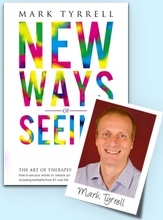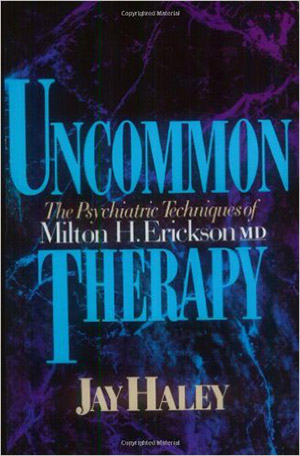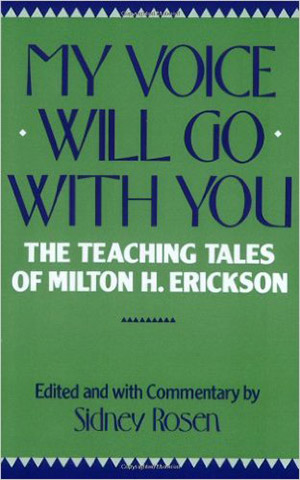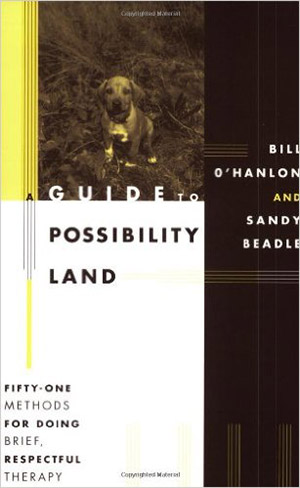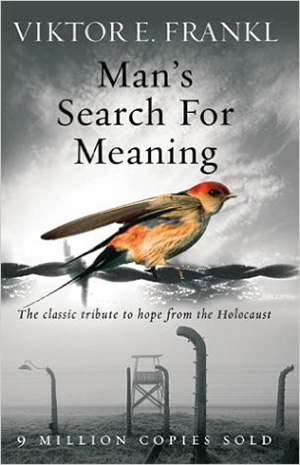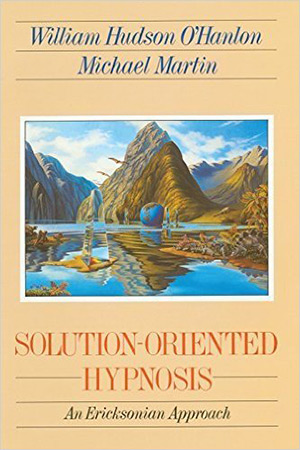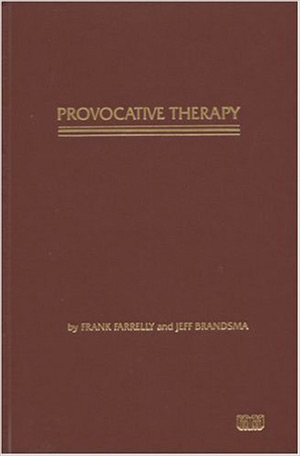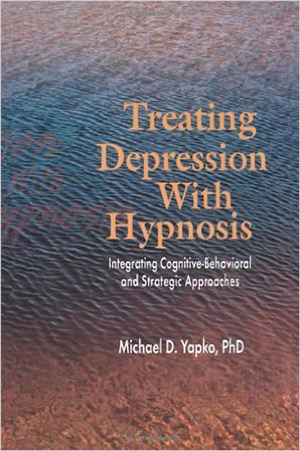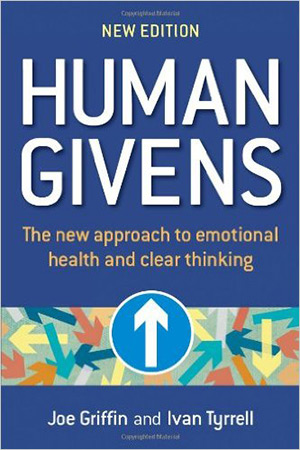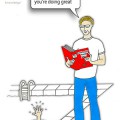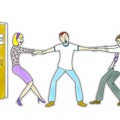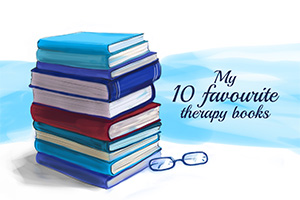
“I find television very educating. Every time somebody turns on the set, I go into the other room and read a book.”
― Groucho Marx
Travelling through space and time, becoming other people, inhabiting other worlds… Reading is perhaps the best kind of virtual reality. At least, it is for me.
When I started out as a therapist I read hundreds of books on therapy and psychology. Of course, some were dry as old bones! Desperate to be ‘scientific’ they would litter the pages with jargon that did nothing but baffle the reader. They might as well have been discussing the workings of central heating for all the good they did me.
But no matter how many of these dull, barren books I had to plough through, it was always worth it when I came upon one of those rare gems – those books that just pulsed with the life blood of real lives and real situations, however far removed in time and space.
Of course, books can only take you so far. Unlike, say, accountancy or calculus, learning therapy is not purely an academic pursuit. It’s not simply a logical, step-by-step process – or at least, it’s not just that. It requires inspiration and artistry. Intuition and spontaneity.
A large part of effective therapy is not about knowledge at all, it’s about practical skills. And as any good tradesperson will tell you, the best way to learn practical skills is not to read about them – it’s to see them in action.
That’s why, while I don’t deny the importance of textbooks, it was watching my tutors treating the public that really helped me absorb the skills I needed to become a good therapist – skills that I still put into practice every day. I learned best by watching, then doing.
But the second-best way of learning was to read about real cases of therapy. When I read, I ‘see’ the therapy in action in my mind’s eye. By reading about real therapy (alongside real-life observation), we can pick up therapeutic skills and insights naturally, almost through osmosis.
And let’s not forget that books are also indispensable for developing a thorough understanding of the fundamentals of psychology and even some neurology – something you won’t gain just from watching.
I hope that this list of books I’ve found useful will prove to be of some value to you as well. See what you think. Have you already read any of them? Are there any I’ve left out that you feel deserve a place?
I must say, there are plenty of books I love that didn’t quite make the cut, and I’ve had to leave off some of the drier titles that deal with in-depth psychological research… but that’s not to say that these aren’t just as valuable in a different way.
Even now when I pick up some of these books I get a visceral thrill as I recall the powerful images that the book evoked… like opening a magical door and letting loose avalanches of inspirational human possibility!
So here goes: my top 10. Well… at the moment. It’s liable to change!
Uncommon Therapy: The Psychiatric Techniques of Milton H. Erickson, M.D. by Jay Haley
This was one of the first therapy books I ever read, and to this day I can still ‘watch’ the shocking case studies presented in this book in my mind’s eye, as vividly as if they were projected on a big screen.
To modern filters, these cases are undoubtedly politically incorrect – but it is hard to deny their startling effectiveness.
In the 1950s and 1960s, psychotherapist Jay Haley worked with Dr Milton Erickson, the genius maverick who helped drag psychotherapy out of the moribund world of narrow, past-obsessed, Freudian analysis. With the publication of this book, he brought Dr Erickson and his techniques to a greater audience.
Haley describes typical problems encountered in infancy, adolescence, young adulthood, middle age and later life. He offers Erickson’s take on these problems and gives beautifully described, almost novelistic examples of his solutions.
From chaos comes cure. But the ‘chaos’ of therapeutic intervention loses its apparent randomness as we come to understand how even the most seemingly bizarre interventions are based on sound and now commonly understood psychotherapeutic principles.
Such principles include: utilisation, paradoxical intervention, naturalistic and spontaneous trance induction, and the art of ‘joining the client’ to develop deep rapport.
Erickson lives and breathes in this book as a wise, witty, humane, and almost supernaturally gifted healer and observer of humanity. Essential reading for anyone seriously interested in the human condition.
My Voice Will Go with You: The Teaching Tales of Milton H. Erickson by Sidney Rosen
Erickson again – but I make no apologies for that! You will finish this book feeling as if you have not only read it, but lived it.
Impotence, suicidal thoughts, thumb sucking, bed wetting, alcoholism, pain, frigidity, poor self-confidence – it’s all here.
From this collection of rich and varied tales, following not only the development of Erickson’s patients but also Erickson’s own personal liberation, emerge sound therapeutic principles to be applied to unique individuals – not codified techniques to be applied to all and sundry.
Rosen gives us a course in creative insight and frees us from restrictive ways of thinking.
One of the overarching themes in the book is the vital importance of metaphor and storytelling to effective therapy. Indeed, I’ve used some of the stories within its pages as therapeutic anecdotes and even for trance inductions with my own clients over the years. The case studies here are quick to read and I’ll sometimes come back to them for inspiration while I await a client.
When I read this in the early 90s, I came to really understand that principles are more important than technique. Once you understand the principles, it’s just a matter of adapting the technique to fit the unique life experience and character of your client.
A Guide to Possibility Land: Fifty-One Methods for Doing Brief, Respectful Therapy by Sandy Beadle and Bill O’Hanlon
While the first two books on this list have the immediacy and impact of fiction, I can’t quite say the same about this one! It has a much more ‘how-to’ feel about it.
Short and accessible, it will take a day to read but a lifetime to master! The busy therapist will benefit from revisiting it often.
A fun and practical primer to solution-focused brief therapy, the book offers a range of tried and tested ideas for connecting with a client’s current state of mind in order to help them feel understood.
It’s chock full of ideas and creative strategies to help even the most negative client focus on goals and resources, and find solutions.
This book helped me loosen up my thinking. Its ideas are so open minded and widely applicable that you can apply the strategies to yourself, your clients, or even whole nations! I read this as a newly qualified therapist and now, decades later, I still refer back to it all the time.
Man’s Search for Meaning by Viktor E. Frankl
Okay, this one’s not strictly a therapy book – though the last chapter does outline the author’s own ideas for effective ‘logotherapy’.
Rather, it chronicles neurologist and psychiatrist Viktor Frankl’s years of suffering in four different concentration camps.
As therapists, we must always strive to understand our clients’ suffering and never to lose that all-important sense of why we do what we do. For me, this book has always reinforced that.
A few years ago I went to Auschwitz, and I was surprised by how strongly I reacted to simply being there. It felt almost as though the vast agony experienced inside this place lay trapped within the cold ground and gas chambers. This book immediately came to mind, and I felt moved to re-read it.
Frankl wrote this after having lost his entire family, including his pregnant wife, in the camps. But refusing to let his experiences break him, he went on to find moments of meaning and inspiration which he describes with beautiful poetry in his book.
Frankl relates his realisation of how vital a sense of meaning is in life: while we can’t necessarily choose whether we suffer, we can choose to make meaning from our experiences and find purpose in life.
Frankl took the horrors of his concentration camp experience and used them to help countless others as a therapist, thinker and teacher. A great book by a truly inspirational man.
Solution-Oriented Hypnosis: An Ericksonian Approach by Bill O’Hanlon
I read this book in a day.
Why so fast? It was the winter of 1994 and I was about to teach my first weekend workshop in naturalistic hypnosis, a technique inspired by the work of Milton Erickson.
This book is an account of just that: a two-day workshop on Ericksonian hypnosis, run by its author, Bill O’Hanlon.
And it was everything I’d hoped for! It inspired me, gave me ideas to incorporate into my own training, and showed me the importance of doing lots of demonstrations.
Just as importantly, it provided clear explanations of all the principles behind hypnotherapy and its use in performance enhancement.
And while the book’s clear strength is its practical application, it’s actually a really fun read! O’Hanlon’s sense of humour glimmers through the prose at every turn.
This book helped springboard my career as a trainer.
Provocative Therapy by Frank Farrelly and Jeff Brandsma
Shock, surprise, and carefully crafted, intuitively guided challenge can – with the right person, at the right time, in the right place, in the right way – provide great therapeutic reframes and breakthroughs.
It can tip people spontaneously into the ultimate learning state: hypnosis.
Although the pioneer of Provocative Therapy didn’t seem to understand the hypnotic nature of many of his own innovations – it seems as if he saw ‘hypnosis’ as a state of closed-eyed or directed consciousness – his insights are nonetheless quite revealing.
As we read, we start to understand how people become stuck in their lives… and how, in the right circumstances, a shock or two can help them become ‘unstuck’.
Really, I think provocative therapy is only part of the jigsaw, whereas Farrelly probably saw it as the whole – just as Viktor Frankl saw meaning as people’s primary and only true need, rather than as one very important part of human need and life.
Farrelly originally trained in person-centred counselling. But he found such a passive approach to helping people not only awkward for him but also unpopular with his clients who, he found, wanted some direction, input and even judgment from the therapist.
When he first started out, the prevailing therapeutic dogma was that the therapist must on no account influence the client. Provocative therapy emerged as a reaction to that.
This is an entertaining and in parts very funny book, but it also has a lot to say about human motivation. Sometimes all someone needs is support, but when a kick-start is needed this book can certainly provide ideas, presented in the form of case studies.
Farrelly switches guises as required, whether that means playing devil’s advocate, exaggerating a client’s attitudes in order to lay them bare, or playing the clown to bring a touch of humour (and therefore flexibility).
Sometimes he seems downright rude, but you get the sense that it is always with a glint in his eye and the client’s welfare foremost in mind. And his clients always seem to sense that. This is by no means an essential read, but it’s a fun and inspiring one.
Change: Principles of Problem Formation and Problem Resolution by Paul Watzlawick, John H. Weakland and Richard Fisch, with a foreword by Milton H. Erickson
This book blew my mind.
For the first time, I saw that problems can be fun, and that solving them can be a wonderful triumph of lateral thinking.
The solution is so often inherent in the problem itself. And once you have a strong sense of that, you find you can start to solve all kinds of problems – and help your clients do the same.
This book isn’t just about psychotherapy, but it’s easy to see how the principles of problem resolution it presents can be applied therapeutically, not to mention politically and interpersonally.
It describes how double-binds work to both keep problems in place and to untangle them. After reading this book I really started to play around with paradox as a way of helping people step outside their problems.
The first chapter can feel like a bit of a hard slog, but do persevere because beyond that you will be richly rewarded. The way this eye-opening book describes paradox and family therapy will change the way you approach problems forever.
Phoenix: Therapeutic Patterns of Milton H. Erickson by David Gordon and Maribeth Meyers-Anderson
Okay, you’re spotting a theme here. Another Erickson book.
But the fact is, Milton Erickson was so much more than just ‘a hypnotist’, and this book dares to tackle many of his less obvious techniques and approaches, describing many cases I hadn’t previously encountered.
The title refers to Phoenix, Arizona, which was Dr Erickson’s home for many years for health reasons.
Erickson didn’t always use formal or (to the untrained eye) obvious hypnotic inductions. Unlike many others before it, this book delves into his broader psychotherapeutic work.
I’ve yet to find a book about Erickson that isn’t fascinating – even jaw dropping – and this is no exception. While some Erickson books seem intended to mystify, this book takes a more practical approach, presenting the great man’s strategies clearly and pragmatically.
I keep this book handy whenever I need a quick fix of creative energy and insight.
Treating Depression With Hypnosis: Integrating Cognitive-Behavioral and Strategic Approaches by Michael D. Yapko
For too long practitioners mythologised the idea of hypnosis being used to help treat depression, often believing that hypnosis could worsen the symptoms of depression.
And they were right… that is, if the type of hypnosis used was aligned to the old therapeutic ideology, which posited that in order to cure a problem the origin of it had to be sought.
This would usually involve having the person dig into the pain of their past.
Depression is already a kind of negative trance state in itself, and using hypnosis to magnify that negative rumination can only make things worse.
But Yapko shows here how using clinical hypnosis in positive ways can not only help relieve a depressed person of the enormous stress that accompanies depression, but also effectively and comfortably engender a healthy relationship with the past and more realistic and hopeful expectations for the future.
This wonderful book gives you strategies to empower depressed people to step aside from negative distortions, fears and regrets, and enable them to meet their emotional needs and fend off depression in future.
Human Givens: The New Approach to Emotional Health and Clear Thinking by Joe Griffin and Ivan Tyrrell
Okay, I have to admit to more than a little bias here: my own father co-authored this book.
But every time I read it – and I’ve read it more times than I can count – I do so as objectively as I can. And every time, it’s like a blast of clarification.
Griffin’s explanation of dreaming, how it links to depression, why and how over-dreaming maintains depression, and how this concept can be used to ultimately lift depression is eye popping.
As are the discussions on the links between the REM state and learning. And, of course, hypnosis.
At a more basic level, the book addresses what it means to be human, the needs we all share and the genetic heritage that helps us meet those needs. It highlights many useful case studies (including one of my own if I remember correctly) and has been widely read by both professionals and lay people – anyone interested in the human condition and how to be psychologically healthy.
This final book in my list makes sense of all the other books in this list, and thousands more to boot.
Yes, we are meaning-making and meaning-needing creatures, as Victor Frankl so rightly said – but we also have other emotional needs. Only when we step back and allow ourselves to see these needs in their entirety can we be clear about what we, our clients, communities, and – I don’t think it’s too grandiose to say – the world needs in order to thrive.
I love hundreds of other psychology and therapy-focused books, and I’m sure the minute I publish this list I’ll suddenly recall one I really should have included! But a quick scan reassures me that these are pretty close to the best I’ve read. I’d love to hear what books have influenced you in your work or life generally.


